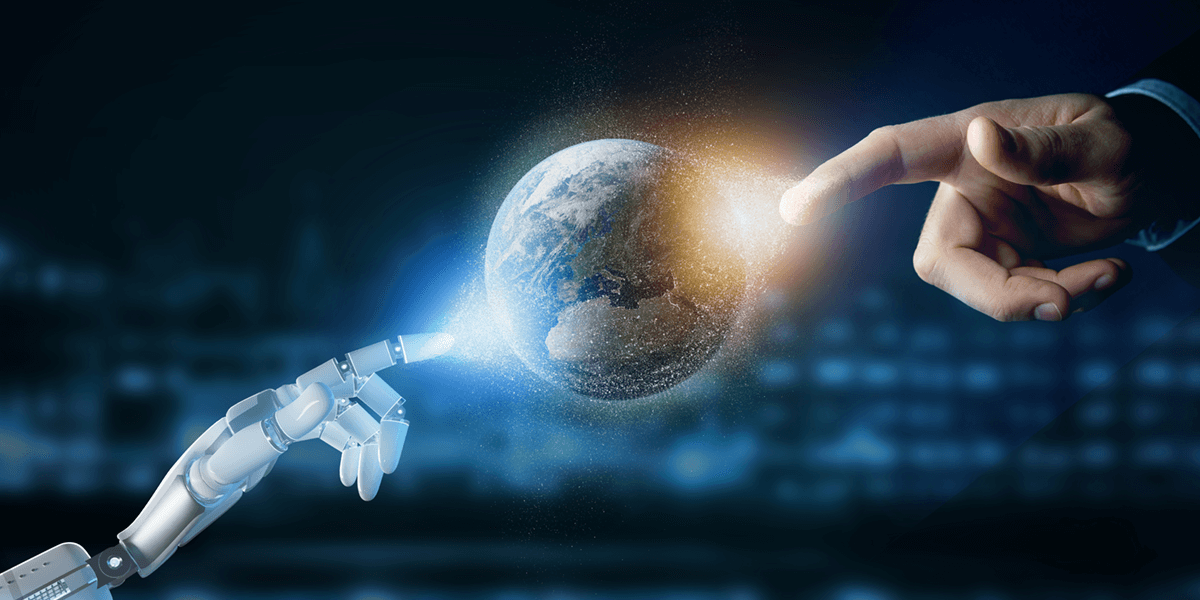Among all the issues of the modern scope, one might mention the current climate change situation. Not only do higher temperatures and hostile weather and environmental changes increase the risk to animal habitats and the biosphere, but more than that, the very existence of human life is in jeopardy. The necessity to take measures in order to eliminate these alterations has been more than ever predominant. And still, every crisis needs some out-of-the-box thinking—can technology, for instance, come to help? This is where artificial intelligence comes in. It offers an opportunity to alter the very approach to solving climate problems.
Believing that AI is all about machines and self-directed weapons of the future is a misrepresentation; AI is rather a creative class of technology which makes it possible to process enormous volumes of data, discern patterns and make forecasts, and manage systems. Presently, as we are seeking means to mitigate emission of CO2 and the use of nonrenewable resources, such tools are some of the very few feasible defences against climate change. This blog will look into further developments in engineering and other areas that harness this technology for the benefit of society and, we hope, global climates in the future.
What Is Artificial Intelligence, or AI?
Machines can perform such functions even without any human input in words because of AI, as the term ‘Artificial Intelligence’ (AI) implies. This encompasses learning, reasoning, and self-correction, among other things. In the most general sense, the goal of AI is to develop systems that can handle tasks that normally are done by humans. AI exists in different ways. Some are focused and do only one thing, such as performing voice recognition or performing analyses of images; others go for more general functions, like those which can be performed by a person.
Machine learning is a buzz word and a type of AI that allows for self-improvement of algorithms based on usage. The way deep learning helps in this is that it tries to simulate our brain’s mode of operation by using the neural network. The AI tools are able to process huge amounts of data in a very short period of time. As a result, such tools are capable of performing effective pattern recognition and forecasting of events, which would be difficult for an ordinary person to accomplish. Such prospects are indeed interesting and appear in various industries, including medical, monetary and many others, thus putting this technology in the forefront of global developments today.
The Role of AI in Climate Change
AI is Revolutionising Climate Change Propagation. Artificial Intelligence considers a lot of information while investigating climatic shifts. It aids in spotting correlations and patterns that have the probability of not being observed by human researchers. Improved perspectives lead to better strategies. AI systems can manage power use intelligently as the demand comes. AI-powered smart grids minimise the excess power generation, generation, and distribution if there are changes in either the demand or supply.
For example, in transport, AI assists logistics companies in optimising their routes and therefore the fuel use and related emissions. Self-driving vehicles take documents with similar principles to the higher parameters within the same area. One more important area is related to the conservation initiatives. Computer-based models of artificial intelligence help in tracking wildlife and conserving their habitats by forecasting changes in the environment. Given the ability of AI to contain large amounts of information in different sectors at once, AI stands as an asset in coming up with range of creative approaches from which various sectors have the ability to tackle the issues of climate change.
Responsibilities of AI on the Efficient Use of Power Resources:
Artificial intelligence is enhancing how we handle energy consumption management. Analysing large amounts of data helps AI systems get real-time data of energy usage optimisation. This translates to less waste and more efficiency. As such, smart grids are a good example of smart technology. It actively uses AI to integrate the demand and the supply as quickly as possible so that renewable sources such as the wind and the sun may be incorporated within the existing systems. Also, based on forecasted electricity demand, energy producers will cut down generation during off-peak, which reduces the use of fuels.
Smart thermostats and appliances are found in most homes and businesses and they gain knowledge on user behaviour with time. These devices help to adjust automatically so as to create optimal conditions and optimal energy costs. The level of impact of intelligent energy systems on environmental protection is likely to be large. With artificial intelligence improving over time, the world is bound to be green.
The Use of Artificial Intelligence Technologies in Agriculture:
The agriculture industry is experiencing changes due to AI technology. Farmers have sophisticated models to practice precision agronomy and apply intervention efforts to improve plant growth. Drones that are fitted with Artificial Intelligence can scan a large tract of land looking at all factors, which include the type of crops that do well in that land and agricultural activities such as pest control. This information enables farmers to decide on the most effective and beneficial way to use available resources in order to reduce losses and increase efficiency.
Climate models and econometric models that include marketing studies of agrarian markets offer assistance to determine when to carry out agrotechnological operations, including planting and harvesting. These instruments make it possible to move immediately and with clear actions depending on the predictions. The use of machines in the food industry also cannot be underestimated. Manual jobs such as the process of planting of the seed and packing of the products can be controlled by the devices. With the pace of improvement of AI, sustainable practices that favour both suppliers and users will be attainable. Taking advantage of these technologies, agriculture will become smarter, and its endurance to climate change challenges will eventually improve.
Early Warning System Against Natural Hazards:
The way we deal with natural hazards is changing profoundly with the emergence of predictive analytics. Able to utilise huge data, it facilitates the search of relationships, which may be distressing. Artificially intelligent early warning systems can observe wave patterns, atmospheric conditions, geological activities, or even the internet. This kind of technology enables people to prepare themselves before a disaster occurs.
For example, there has been increased accuracy in predicting storms and hurricanes with the use of machines, which have also resulted in the creation of machine-thinking capabilities by giant technology corporations. They make several calculations in order to predict the path and size of the storm. This is not only meant for the governments; the people are included as well. Notifications can be sent to people’s phones, which can help them take the necessary steps. There are difficulties in putting this in practice, but there are very high advantages. With efficient planning and prognostication, loss of lives and destruction of properties can be controlled when nature decides to attack.
Limitations of AI Implementation in Disaster Risk Reduction and Management:
However, there are some limitations to using AI technology in C2. One of the major drawbacks relates to the amount of energy that is needed to further develop such sophisticated algorithms. Understandably, it is quite paradoxical that tools designed for helping save the planet can also lead to the enhancement of the same problems they are trying to solve. Data and ethical concerns are equally common as well. It is common for artificial intelligence technologies to require vast data sets that encourage questions of abuse and the possession of such data. Who owns these data? And even if this information isn’t withheld, how is it guaranteed that it will be used in an appropriate manner?
In addition, there is also the problem of generating neat solutions and depriving the problem of its foundational causes. This is dangerous because developing artificial intelligence for industrial use may discourage such industries from embracing behavioural changes that are essential for sustainability. Furthermore, bearing in mind the likelihood of discriminative algorithms. The likelihood of artificial intelligence solutions being discriminatory due to poor or biassed data sets will not help in addressing the problem. Not every challenge has to steal our will to fight for greener goals. Blockchain technologies embrace many possibilities in limiting such self-surveillance.
Conclusion:
The nexus of AI and climate change is an ever-growing area of interest. There are new technologies that one could explore, for example, taking drastic measures to change the environment. In the near future, AI is no longer just a tool; it is quickly evolving into a necessary ally in the quest for sustainability. Whether it is cutting down on energy consumption or improving the ways in which farmers grow crops, AI applications could cut across various industries. Nonetheless, this journey comes with hurdles that need to be very well thought about and planned for.
These include, among other possible solutions, proper focus on ethical issues and data protection as we head further. Cross-sector collaborations are to be fundamental in enhancing the positive difference AI makes on the climate. Collectively, the challenges posed by climate change can be turned into opportunities through the mobilisation of technology. Achieving progress and being responsible ensures that progress made is not only enjoyed by a few in society and the natural surroundings are preserved as well. If done properly, the way forward promises tremendous benefits.
FAQs:
1. How does AI help in the fight against climate change?
AI is able to evaluate huge amounts of information in a very short time; it is unnecessary to rely on human abilities. It helps in spotting intervals and activities that are associated with the production of carbon, energy consumption, and environmental change. This informs the institutions for taking decisions.
2. How can AI be used towards sustainability? Provide examples.
Yes! Such companies as Google make use of AI in their data centres to reduce energy consumption, for instance, by saving on the over 50 percent electricity to cool the servers in operation. Another example includes IBM launching the Green Horizon project aimed at helping cities control pollution levels employing predictive analytics.
3. Is it possible to use AI to replace people’s work fighting climate change?
In the case of tackling climate challenges, while there is a lot that can be accomplished through AI, at the same time, effort by humans is irreplaceable. This is because such risks are fundamentally important in devising insursions against climate change—technology and people together.
4. What are some positive and negative consequences of allowing AI to solve environmental problems?
Another problem could be the unintended risks from embedded objects comprising algorithms that could be biassed in a way that no non-biassed recommendation may come out. Moreover, some important sustainable movements may be overlooked due to excessive faith in technology.
5. Is there a high cost of implementing AI?
In the beginning, it may seem very expensive since there is a need for infrastructure as well as experts; however, these costs are usually recovered with increased efficiency in the end.



